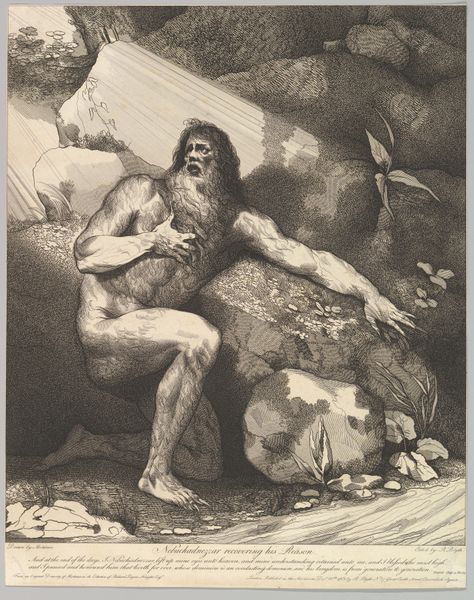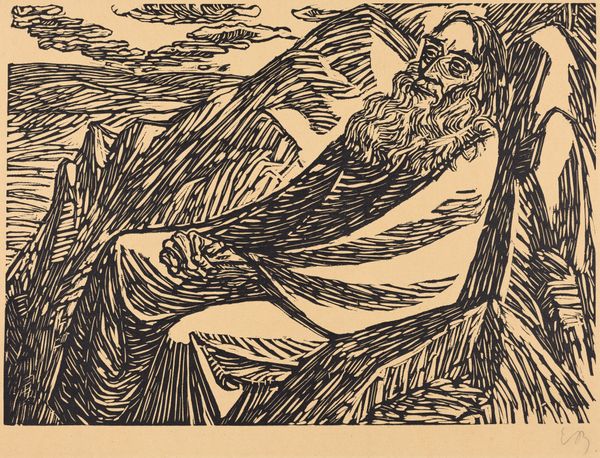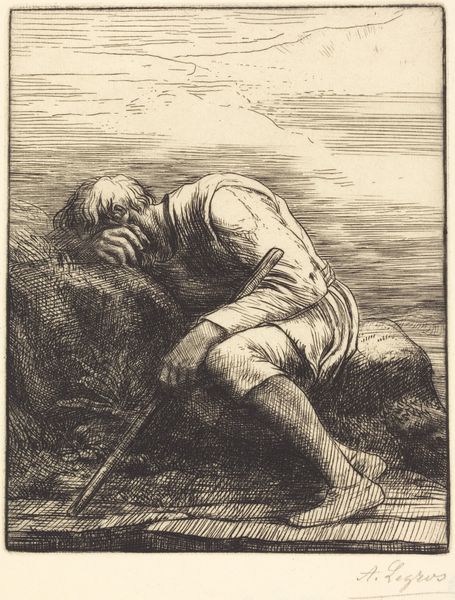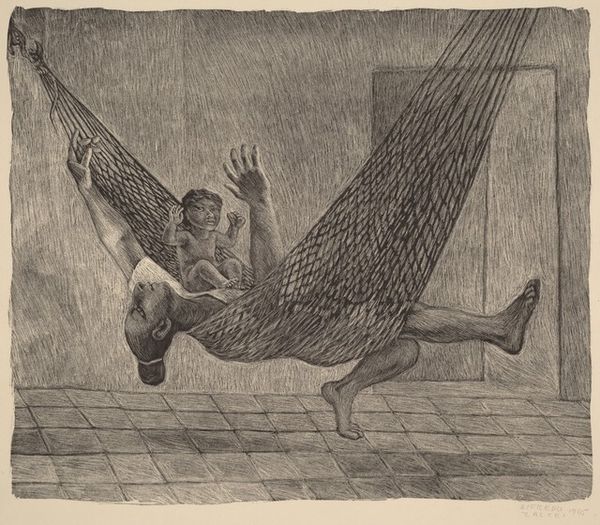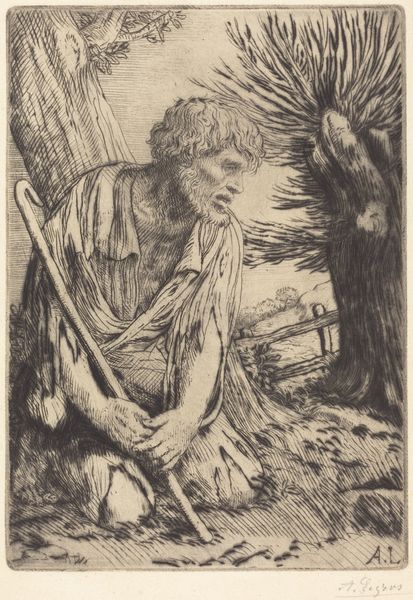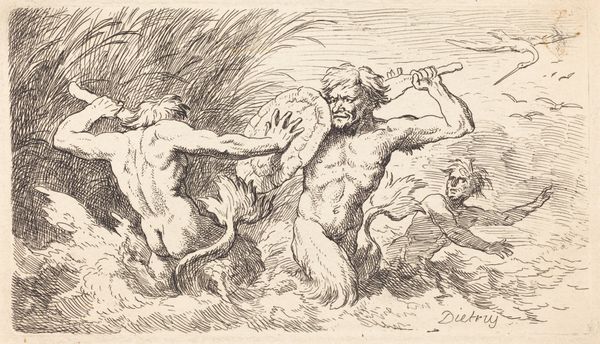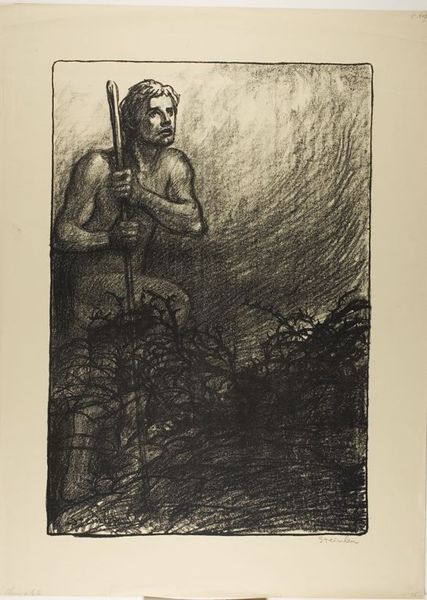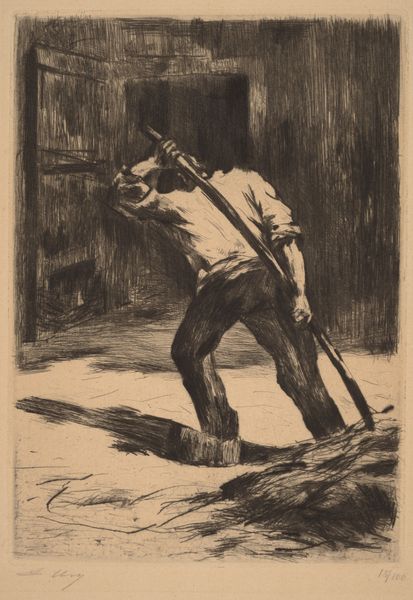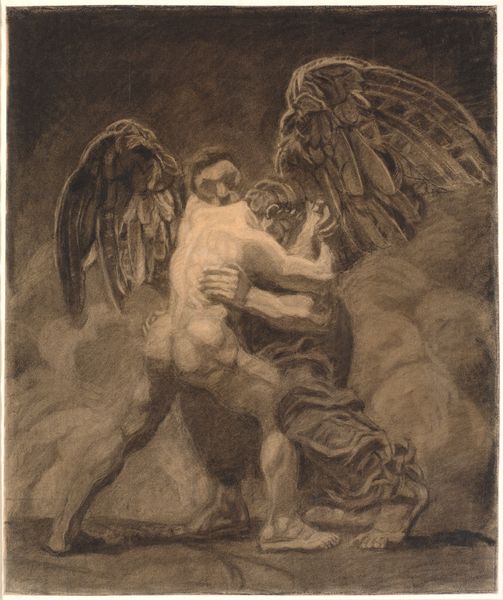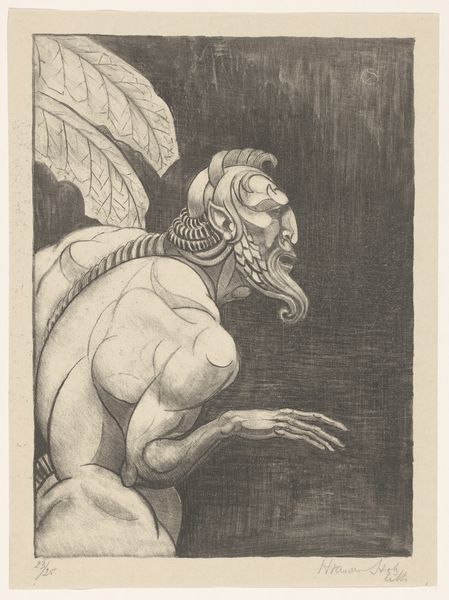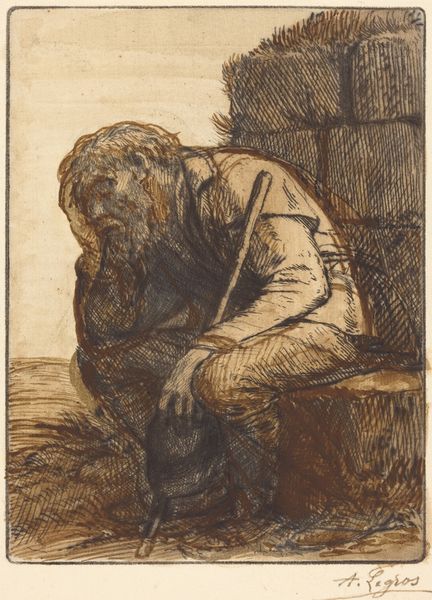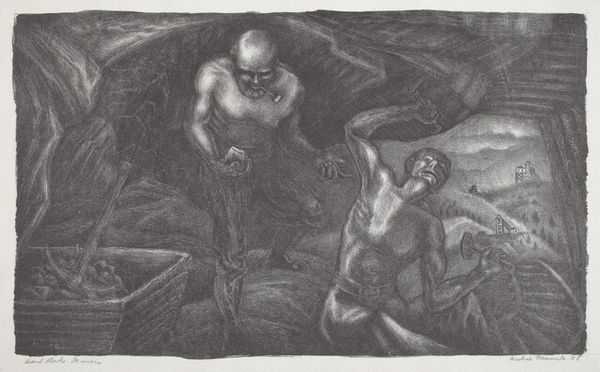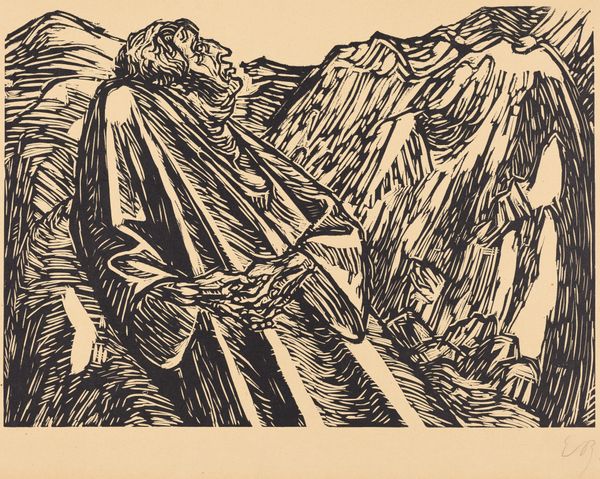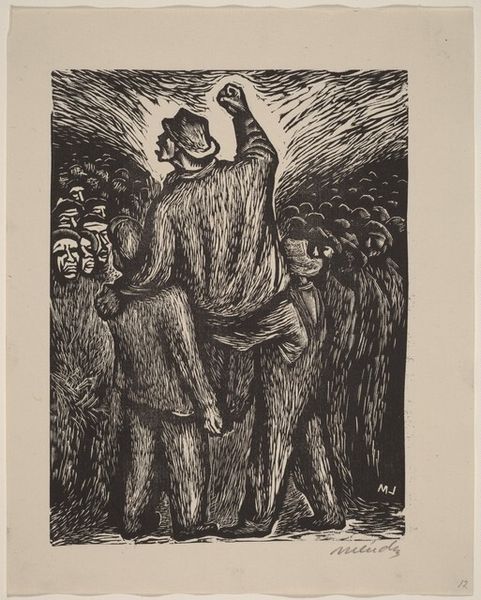
drawing, print, etching, paper
#
portrait
#
drawing
# print
#
etching
#
paper
#
symbolism
#
portrait drawing
#
history-painting
Dimensions: 239 × 210 mm (plate); 509 × 363 mm (sheet)
Copyright: Public Domain
Editor: Okay, so here we have "Lucifer," an etching by Franz von Stuck, from around 1890. The stark blacks and whites are really striking. The figure is just so intense and brooding. What do you see in this piece? Art Historian: A fascinating depiction, indeed. Stuck's "Lucifer" is far more than just a depiction of the fallen angel; it’s a visual condensation of anxieties brewing at the fin de siècle. Notice how he’s positioned - hunched, pensive. Where do you think that gaze is directed? Editor: Downward, but focused. Not at us, more inward. Art Historian: Precisely. That inward gaze speaks volumes. Stuck is tapping into the burgeoning interest in the psychological landscape – Freud was developing his theories around this time, remember. Lucifer isn't just rebellious; he’s grappling with the consequences of his actions. And see those feathers? Are they ascendant, or fallen? Editor: Hmm, they seem heavy, dragging downward. They appear as weights rather than wings, as they should do, by helping it fly. Is he representing the burden of intellect and knowledge? Art Historian: Precisely. The Symbolists often used Lucifer as a figure of tragic enlightenment – the burden of seeing a truth others couldn't, or wouldn’t, understand. Lucifer becomes a vessel for conveying philosophical rebellion as much as the divine one. It serves as a challenge. What kind of reaction does this piece provoke? Editor: It makes me question assumptions about good and evil. I now can imagine his burden rather than his evil action. Art Historian: And that questioning is precisely what Symbolist artists like Stuck aimed to inspire. He evokes more than religious defiance – Stuck illustrates the profound anxieties linked with knowledge, modernity, and the uncertain dawn of the 20th century. It presents not only the fall but also the isolation of it. It allows us to revisit the cultural interpretation we might have. Editor: I see what you mean. It’s like he’s portraying not just a biblical figure, but also the intellectual angst of his time. Thank you, that provides so much cultural context! Art Historian: My pleasure. Now consider how many other artistic works could change meanings and impressions by adding similar background and interpretations.
Comments
No comments
Be the first to comment and join the conversation on the ultimate creative platform.
